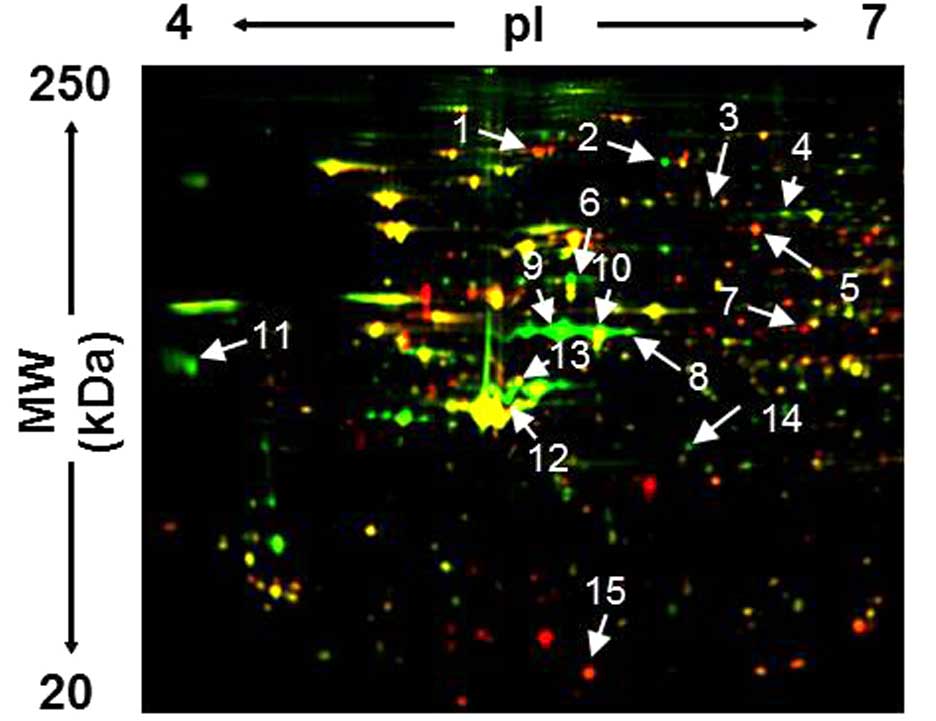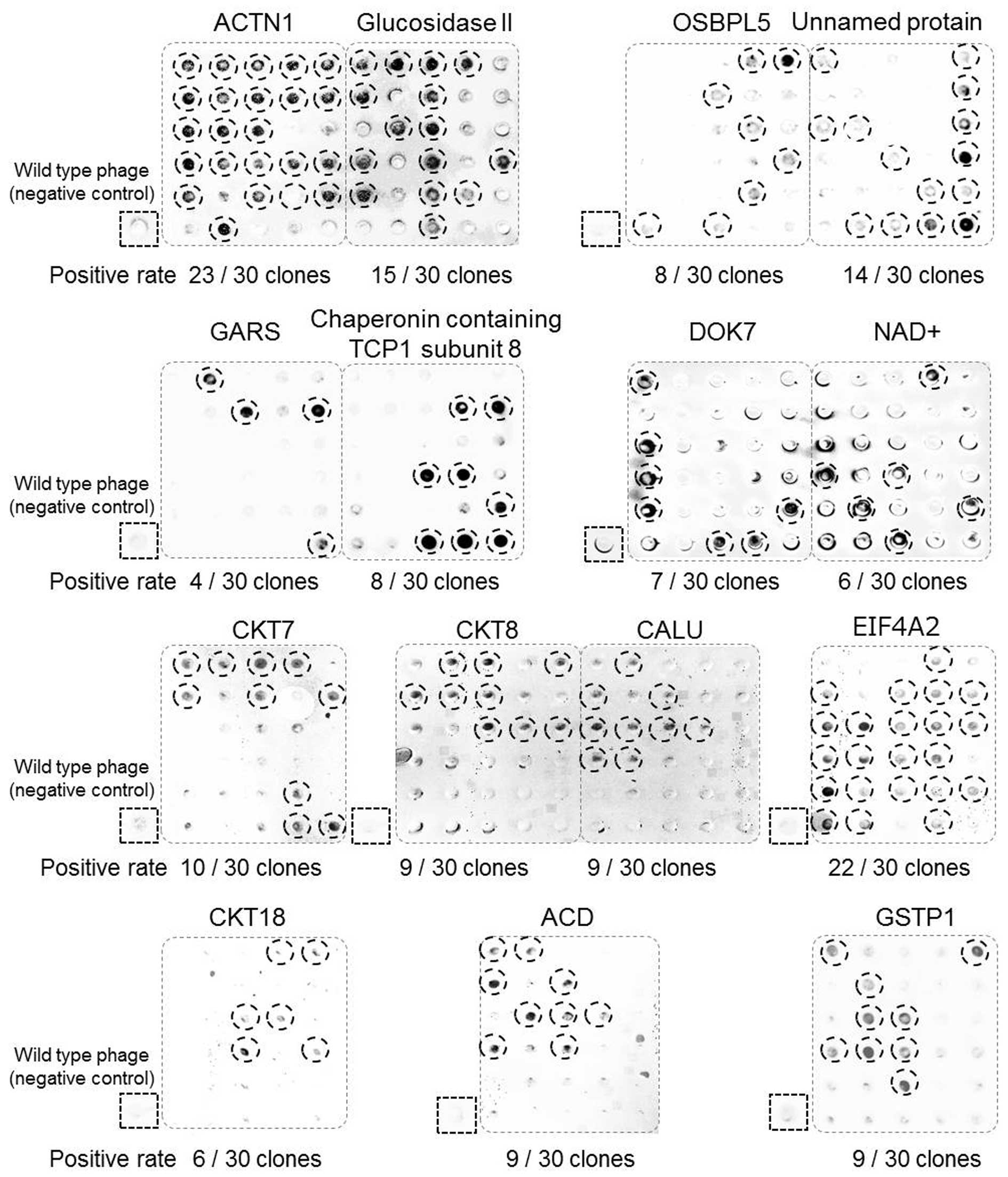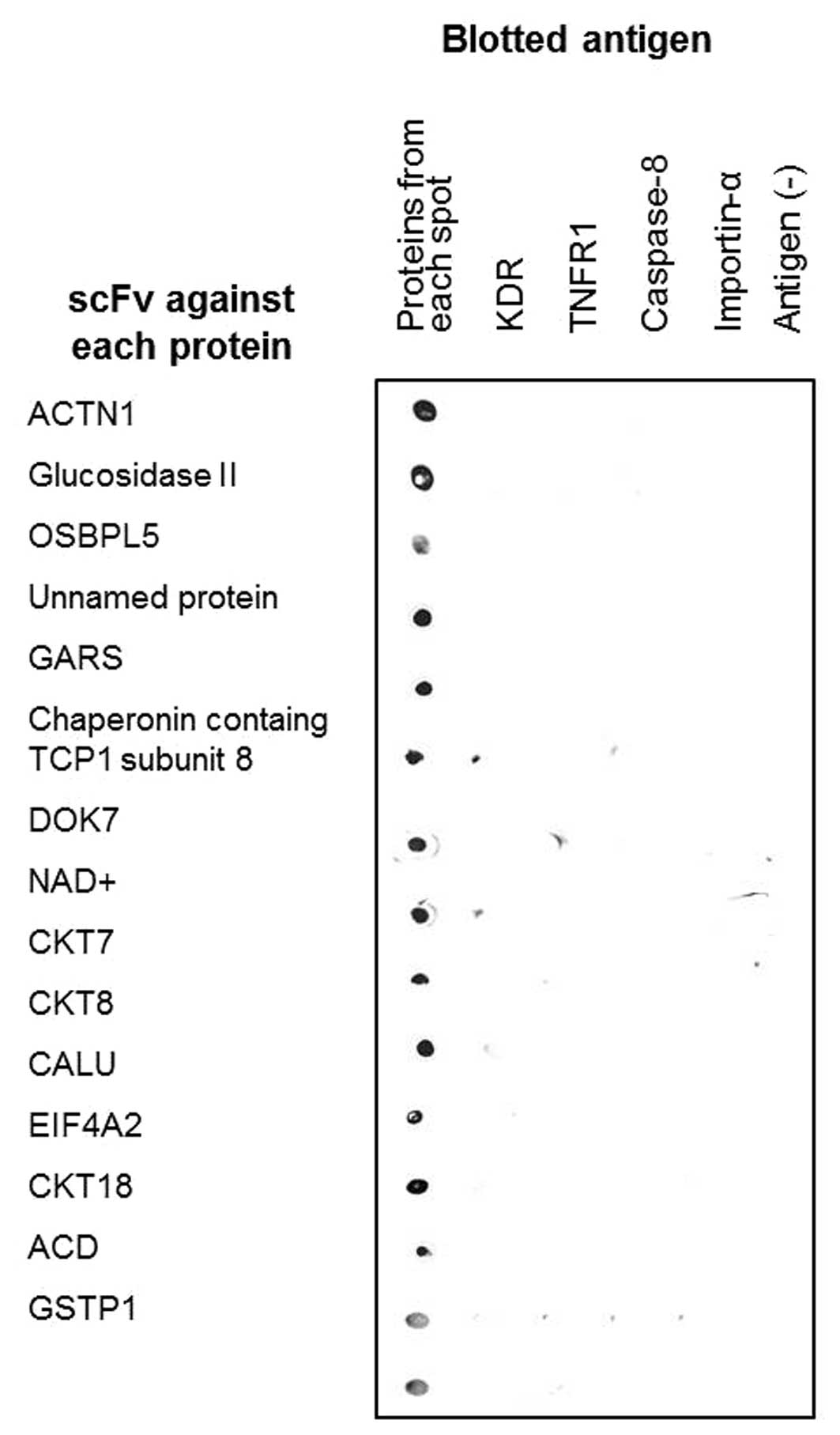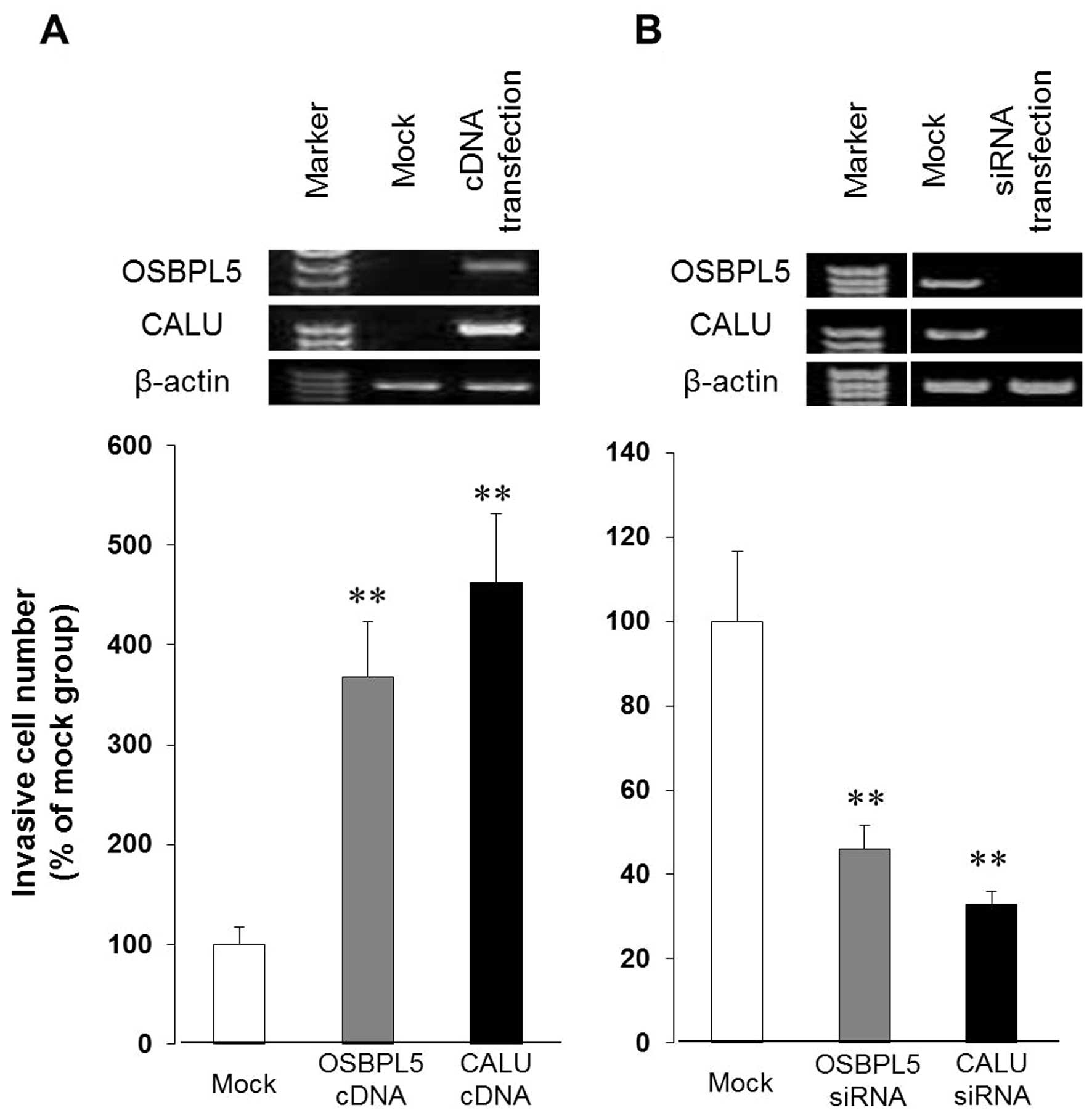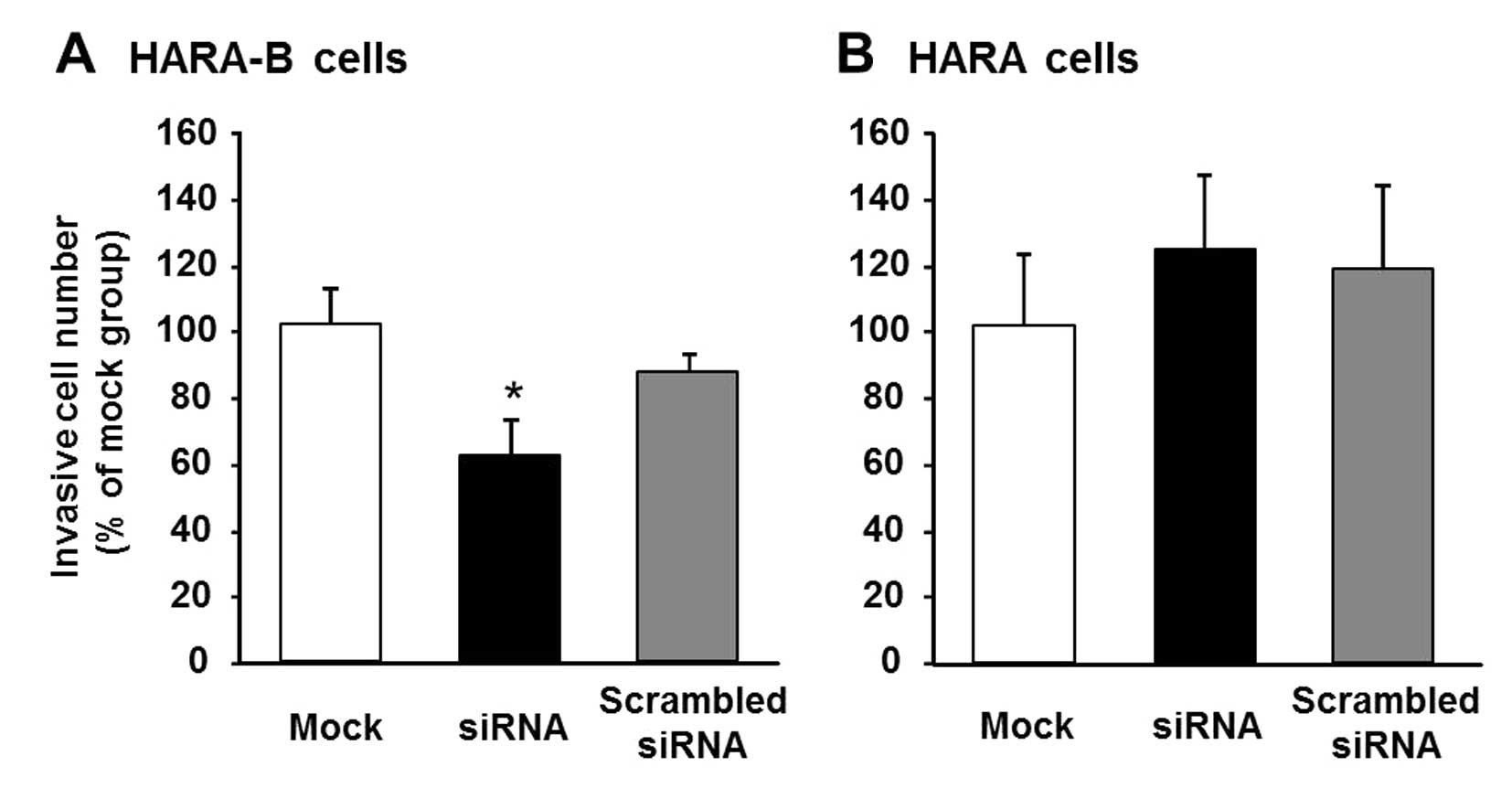|
1
|
Parkin DM, Bray F, Ferlay J and Pisani P:
Global cancer statistics, 2002. CA Cancer J Clin. 55:74–108. 2005.
View Article : Google Scholar : PubMed/NCBI
|
|
2
|
Steeg PS: Metastasis suppressors alter the
signal transduction of cancer cells. Nat Rev Cancer. 3:55–63. 2003.
View Article : Google Scholar : PubMed/NCBI
|
|
3
|
Rochefort H, Capony F and Garcia M:
Cathepsin D: A protease involved in breast cancer metastasis.
Cancer Metastasis Rev. 9:321–331. 1990. View Article : Google Scholar : PubMed/NCBI
|
|
4
|
Zheng S, Chang Y, Hodges KB, Sun Y, Ma X,
Xue Y, Williamson SR, Lopez-Beltran A, Montironi R and Cheng L:
Expression of KISS1 and MMP-9 in non-small cell lung cancer and
their relations to metastasis and survival. Anticancer Res.
30:713–718. 2010.PubMed/NCBI
|
|
5
|
Koga F, Kihara K and Neckers L: Inhibition
of cancer invasion and metastasis by targeting the molecular
chaperone heat-shock protein 90. Anticancer Res. 29:797–807.
2009.PubMed/NCBI
|
|
6
|
Tsutsumi S and Neckers L: Extracellular
heat shock protein 90: A role for a molecular chaperone in cell
motility and cancer metastasis. Cancer Sci. 98:1536–1539. 2007.
View Article : Google Scholar : PubMed/NCBI
|
|
7
|
Kang Y and Massagué J:
Epithelial-mesenchymal transitions: Twist in development and
metastasis. Cell. 118:277–279. 2004. View Article : Google Scholar : PubMed/NCBI
|
|
8
|
Tsuji T, Ibaragi S and Hu GF:
Epithelial-mesenchymal transition and cell cooperativity in
metastasis. Cancer Res. 69:7135–7139. 2009. View Article : Google Scholar : PubMed/NCBI
|
|
9
|
Lee GH, Yan C, Shin SJ, Hong SC, Ahn T,
Moon A, Park SJ, Lee YC, Yoo WH, Kim HT, et al: BAX inhibitor-1
enhances cancer metastasis by altering glucose metabolism and
activating the sodium-hydrogen exchanger: The alteration of
mitochondrial function. Oncogene. 29:2130–2141. 2010. View Article : Google Scholar : PubMed/NCBI
|
|
10
|
Torosian M, Charland S and Lappin J:
Biochemical modulation of tumor-growth, metastasis and host
metabolism. Oncol Rep. 2:1141–1145. 1995.PubMed/NCBI
|
|
11
|
Hanash S: Disease proteomics. Nature.
422:226–232. 2003. View Article : Google Scholar : PubMed/NCBI
|
|
12
|
Imai S, Nagano K, Yoshida Y, Okamura T,
Yamashita T, Abe Y, Yoshikawa T, Yoshioka Y, Kamada H, Mukai Y, et
al: Development of an antibody proteomics system using a phage
antibody library for efficient screening of biomarker proteins.
Biomaterials. 32:162–169. 2011. View Article : Google Scholar
|
|
13
|
Yamashita T, Nagano K, Kanasaki S, Maeda
Y, Furuya T, Inoue M, Nabeshi H, Yoshikawa T, Yoshioka Y, Itoh N,
et al: Annexin A4 is a possible biomarker for cisplatin
susceptibility of malignant mesothelioma cells. Biochem Biophys Res
Commun. 421:140–144. 2012. View Article : Google Scholar : PubMed/NCBI
|
|
14
|
Yamashita T, Okamura T, Nagano K, Imai S,
Abe Y, Nabeshi H, Yoshikawa T, Yoshioka Y, Kamada H, Tsutsumi Y, et
al: Rho GDP-dissociation inhibitor alpha is associated with cancer
metastasis in colon and prostate cancer. Pharmazie. 67:253–255.
2012.PubMed/NCBI
|
|
15
|
Yoshida Y, Yamashita T, Nagano K, Imai S,
Nabeshi H, Yoshikawa T, Yoshioka Y, Abe Y, Kamada H, Tsutsumi Y, et
al: Limited expression of reticulocalbin-1 in lymphatic endothelial
cells in lung tumor but not in normal lung. Biochem Biophys Res
Commun. 405:610–614. 2011. View Article : Google Scholar : PubMed/NCBI
|
|
16
|
Nagano K, Kanasaki S, Yamashita T, Maeda
Y, Inoue M, Higashisaka K, Yoshioka Y, Abe Y, Mukai Y, Kamada H, et
al: Expression of Eph receptor A10 is correlated with lymph node
metastasis and stage progression in breast cancer patients. Cancer
Med. 2:972–977. 2013. View
Article : Google Scholar
|
|
17
|
Nagano K, Maeda Y, Kanasaki S, Watanabe T,
Yamashita T, Inoue M, Higashisaka K, Yoshioka Y, Abe Y, Mukai Y, et
al: Ephrin receptor A10 is a promising drug target potentially
useful for breast cancers including triple negative breast cancers.
J Control Release. 189:72–79. 2014. View Article : Google Scholar : PubMed/NCBI
|
|
18
|
Nagano K, Yamashita T, Inoue M,
Higashisaka K, Yoshioka Y, Abe Y, Mukai Y, Kamada H, Tsutsumi Y and
Tsunoda S: Eph receptor A10 has a potential as a target for a
prostate cancer therapy. Biochem Biophys Res Commun. 450:545–549.
2014. View Article : Google Scholar : PubMed/NCBI
|
|
19
|
Imai S, Mukai Y, Nagano K, Shibata H,
Sugita T, Abe Y, Nomura T, Tsutsumi Y, Kamada H, Nakagawa S, et al:
Quality enhancement of the non-immune phage scFv library to isolate
effective antibodies. Biol Pharm Bull. 29:1325–1330. 2006.
View Article : Google Scholar : PubMed/NCBI
|
|
20
|
Teraoka S, Kyoizumi S, Seyama T, Yamakido
M and Akiyama M: Scid mice model for the in-vivo study of human
oncotherapy -studies on the growth and metastasis of human
lung-cancer. Int J Oncol. 5:501–508. 1994.PubMed/NCBI
|
|
21
|
Teraoka S, Kyoizumi S, Seyama T, Yamakido
M and Akiyama M: A novel SCID mouse model for studying spontaneous
metastasis of human lung cancer to human tissue. Jpn J Cancer Res.
86:419–423. 1995. View Article : Google Scholar : PubMed/NCBI
|
|
22
|
Hirai K, Shimada H, Ogawa T and Taji S:
The spread of human lung cancer cells on collagens and its
inhibition by type III collagen. Clin Exp Metastasis. 9:517–527.
1991. View Article : Google Scholar : PubMed/NCBI
|
|
23
|
Kuramochi M, Fukuhara H, Nobukuni T, Kanbe
T, Maruyama T, Ghosh HP, Pletcher M, Isomura M, Onizuka M, Kitamura
T, et al: TSLC1 is a tumor-suppressor gene in human non-small-cell
lung cancer. Nat Genet. 27:427–430. 2001. View Article : Google Scholar : PubMed/NCBI
|
|
24
|
Fairn GD and McMaster CR: Emerging roles
of the oxysterol-binding protein family in metabolism, transport,
and signaling. Cell Mol Life Sci. 65:228–236. 2008. View Article : Google Scholar
|
|
25
|
Shibata K, Nakayama T, Hirakawa H, Hidaka
S and Nagayasu T: Clinicopathological significance of
angiopoietin-like protein 4 expression in oesophageal squamous cell
carcinoma. J Clin Pathol. 63:1054–1058. 2010. View Article : Google Scholar : PubMed/NCBI
|
|
26
|
Ando T, Ishiguro H, Kuwabara Y, Kimura M,
Mitsui A, Kurehara H, Sugito N, Tomoda K, Mori R, Takashima N, et
al: Expression of ACP6 is an independent prognostic factor for poor
survival in patients with esophageal squamous cell carcinoma. Oncol
Rep. 15:1551–1555. 2006.PubMed/NCBI
|
|
27
|
Hashimoto T, Kusakabe T, Sugino T, Fukuda
T, Watanabe K, Sato Y, Nashimoto A, Honma K, Kimura H, Fujii H, et
al: Expression of heart-type fatty acid-binding protein in human
gastric carcinoma and its association with tumor aggressiveness,
metastasis and poor prognosis. Pathobiology. 71:267–273. 2004.
View Article : Google Scholar : PubMed/NCBI
|
|
28
|
Hindler K, Cleeland CS, Rivera E and
Collard CD: The role of statins in cancer therapy. Oncologist.
11:306–315. 2006. View Article : Google Scholar : PubMed/NCBI
|
|
29
|
Ishikawa S, Nagai Y, Masuda T, Koga Y,
Nakamura T, Imamura Y, Takamori H, Hirota M, Funakosi A, Fukushima
M, et al: The role of oxysterol binding protein-related protein 5
in pancreatic cancer. Cancer Sci. 101:898–905. 2010. View Article : Google Scholar : PubMed/NCBI
|
|
30
|
Koga Y, Ishikawa S, Nakamura T, Masuda T,
Nagai Y, Takamori H, Hirota M, Kanemitsu K, Baba Y and Baba H:
Oxysterol binding protein-related protein-5 is related to invasion
and poor prognosis in pancreatic cancer. Cancer Sci. 99:2387–2394.
2008. View Article : Google Scholar : PubMed/NCBI
|
|
31
|
Honoré B: The rapidly expanding CREC
protein family: Members, localization, function, and role in
disease. BioEssays. 31:262–277. 2009. View Article : Google Scholar : PubMed/NCBI
|
|
32
|
Cappello F, David S, Rappa F, Bucchieri F,
Marasà L, Bartolotta TE, Farina F and Zummo G: The expression of
HSP60 and HSP10 in large bowel carcinomas with lymph node
metastase. BMC Cancer. 5:1392005. View Article : Google Scholar : PubMed/NCBI
|
|
33
|
Castilla C, Congregado B, Conde JM, Medina
R, Torrubia FJ, Japón MA and Sáez C: Immunohistochemical expression
of Hsp60 correlates with tumor progression and hormone resistance
in prostate cancer. Urology. 76:1017.e1–6. 2010. View Article : Google Scholar
|
|
34
|
Wu W, Tang X, Hu W, Lotan R, Hong WK and
Mao L: Identification and validation of metastasis-associated
proteins in head and neck cancer cell lines by two-dimensional
electrophoresis and mass spectrometry. Clin Exp Metastasis.
19:319–326. 2002. View Article : Google Scholar : PubMed/NCBI
|
|
35
|
Ding SJ, Li Y, Shao XX, Zhou H, Zeng R,
Tang ZY and Xia QC: Proteome analysis of hepatocellular carcinoma
cell strains, MHCC97-H and MHCC97-L, with different metastasis
potentials. Proteomics. 4:982–994. 2004. View Article : Google Scholar : PubMed/NCBI
|



